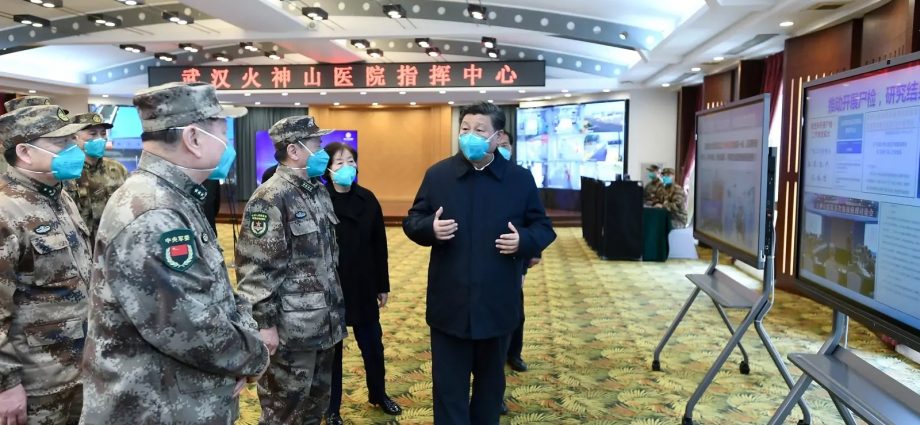
China’s zero-Covid policy was an unsustainable economic model, and yet the announcement to reopen the economy came as a surprise to the world. Even more unexpected was its very rapid, if not immediate, implementation.
It should have been clear when the Omicron variant reached China in January 2022 that the respiratory disease could and would spread despite a zero-Covid policy. The irony of this, however, is that China’s leadership decided to maintain its stance for as long as 11 months afterward. Even during the 20th Party Congress in October, no sign was given that zero-Covid policies would be lifted.
The effects of the China’s Covid strategy were seen in various ways. Tight mobility restrictions had negative impacts on activity in China, and the reduction in consumption alone reduced GDP growth by as much as 2.5% in 2022. As a result, the actual GDP growth rate of China ended up being only 3% last year. If mobility restrictions had not been implemented, GDP growth could have been as high as the official target of 5.5%.
A recovery in consumption has occurred since mobility restrictions were lifted at a national level in December. Pre-Covid levels are nearly restored, and this was demonstrated by inter-city travel rising quicker than intra-city mobility in the run-up to the Lunar New Year.
Two other important policy measures that damaged GDP growth were a further tightening of real-estate restrictions and a crackdown on the tech and the general private sector. Both of these caused a collapse in investment, and while China’s reopening will certainly throw a lifeline to both in terms of demand for housing and tech, this is not the main reason the outlook for both sectors has improved, at least in the short term.
In fact it is really about the political economy of China and where its political regime stands.
The increasingly poor economic situation since the US-led trade war started, along with the Covid-19 crisis and the demise of real estate and tech, makes it absolutely essential for the leadership to restart the economy. Given the poor state of local-government finances, the collapse of many small and medium-sized enterprises (SMEs), stagnant household income and growing youth unemployment, this is a non-negotiable objective.
China is certainly heading back on a growth trajectory. This is not only the reason the reopening from zero-Covid policies has happened at lightning speed but is also why the government is lifting regulatory restrictions on real-estate developers and much of the pressure on the tech sector.
The well-known “three red lines” policy for real-estate developers to limit leverage has been lifted and tech companies are ready to jump on new IPOs (initial public offerings) and other ventures. Both sectors are bound to be better placed in 2023 than last year given the importance of growth in the political agenda.
I expect growth to hover around 5.5% in 2023, which is slightly above the latest International Monetary Fund (IMF) projection in its Spring World Economic Outlook (forecast at 5.2%) but still less than some sell-side analysts.
The bulk of China’s growth should come from the recovery of consumption, followed by some recovery in investment as sentiment improves. External demand should contribute less to China’s growth in 2023, especially in the first half, given stagnant growth in North America and Europe.
Challenges beyond 2023
While it does seem that there will be less pressure on the private sector in 2023 in order to boost household income, the Chinese government is unlikely to implement a permanent 180-degree turn on policies designed to rein in the private sector. As long as the Xi Jinping administration remains convinced of the superiority of China’s economic model – which is tightly linked to the political model – there will not be a structural change.
Support for the private sector, including real-estate developers and tech companies, is back now because of the lack of a better option. China’s leaders desperately need growth to be reset. Once this tactical objective is achieved, the leadership will be expecting both the real-estate and the tech sectors to contribute to the China dream by supporting common prosperity.
Furthermore, tech entrepreneurs, the core of the private sector, will probably need to continue to be monitored to ensure they remain aligned with the Communist Party’s strategy and objectives.
Even if political tensions remain high, 2023 should be a rather good year for China’s growth outlook, at least when compared with what is expected down the line. This year will be cyclically good but, structurally, China’s growth will continue to decelerate.
The explanation for this much more positive path for 2023 is simple: It’s because of the large and positive base effect after a terrible 2022. The opposite will be true in 2024, when the base effect will be negative, curving growth up to 4.5% and structurally for the next few years to around 2.5% by 2030.
China’s leadership will need to deliver growth to improve the currently difficult economic conditions of local governments, SMEs and households. This will be easy in 2023 but much harder in the future.
Alicia García Herrero is the chief economist for Asia-Pacific at Natixis and senior fellow at the European think-tank Bruegel. Follow her on Twitter @Aligarciaherrer.

